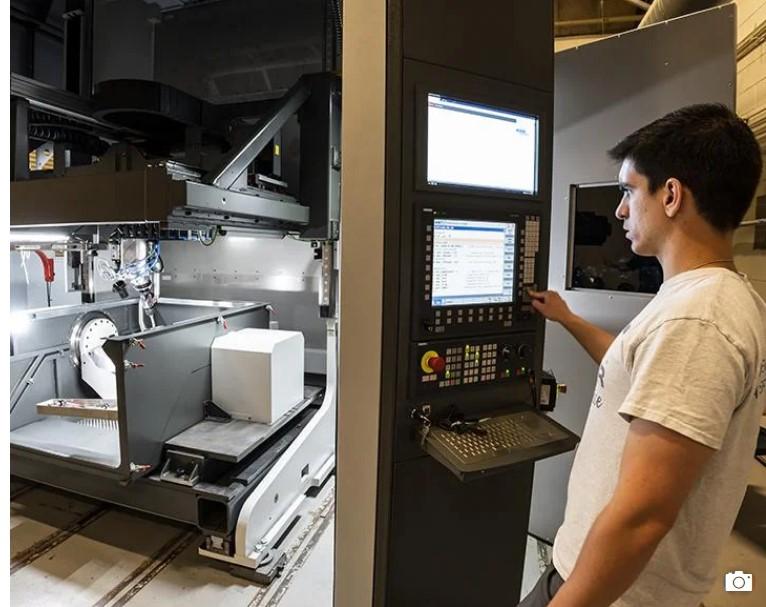- FMA
- The Fabricator
- FABTECH
- Canadian Metalworking
Our Publications
Categories
- Additive Manufacturing
- Aluminum Welding
- Arc Welding
- Assembly and Joining
- Automation and Robotics
- Bending and Forming
- Consumables
- Cutting and Weld Prep
- Electric Vehicles
- En Español
- Finishing
- Hydroforming
- Laser Cutting
- Laser Welding
- Machining
- Manufacturing Software
- Materials Handling
- Metals/Materials
- Oxyfuel Cutting
- Plasma Cutting
- Power Tools
- Punching and Other Holemaking
- Roll Forming
- Safety
- Sawing
- Shearing
- Shop Management
- Testing and Measuring
- Tube and Pipe Fabrication
- Tube and Pipe Production
- Waterjet Cutting
Industry Directory
Webcasts
Podcasts
FAB 40
Advertise
Subscribe
Account Login
Search
Pitt engineering school touts benefits of its new large-scale metal 3D printer
- August 23, 2022
- News Release
- Additive Manufacturing
“Tucked away in the sub-basement of Pitt’s Benedum Hall, past the racecar parts spilling into hallways, you’ll find a giant machine that looks like a cross between a car garage and the entry port of a sci-fi spaceship,” begins an article recently posted to the University of Pittsburgh website.
The “giant machine” is a Gefertec arc605 3D printer—reportedly the first such system at any U.S. university. The 605, whose outer dimensions are 4,500 by 4,500 by 4,500 mm, combines WAAM (wire-arc additive manufacturing) technology with five axes of motion, integrative CAM software, and process-related quality monitoring. It prints parts up to 900 by 700 mm and has a linear-motion speed of 25 m/min. in the X, Y, and Z axes.
“For producing big, specialized metal parts, the machine is unbeatable,” said Albert To, a professor in Pitt’s Swanson School of Engineering. “Even on the order of tens of parts, this is very advantageous. And if you want to include some complexity, then you can’t do it any other way than 3D printing.”
One of To’s first projects was to print a 3-ft.-long bridge joint for the U.S. Army—a part that was no longer produced.
Xavier Jimenez, a third-year doctoral candidate in To’s lab, is developing a process to 3D-print a new type of high-strength aluminum that tends to crack when welded.
“You have to tune all these different parameters to figure out what will produce the best-quality weld,” Jimenez said, who came to Pitt in part because he wanted to work with the arc605. “Every material behaves a little differently.”
Click here to read the entire article about Pitt’s new metal 3D printer.
- Podcasting
- Podcast:
- The Fabricator Podcast
- Published:
- 04/16/2024
- Running Time:
- 63:29
In this episode of The Fabricator Podcast, Caleb Chamberlain, co-founder and CEO of OSH Cut, discusses his company’s...
- Trending Articles
- Industry Events
16th Annual Safety Conference
- April 30 - May 1, 2024
- Elgin,
Pipe and Tube Conference
- May 21 - 22, 2024
- Omaha, NE
World-Class Roll Forming Workshop
- June 5 - 6, 2024
- Louisville, KY
Advanced Laser Application Workshop
- June 25 - 27, 2024
- Novi, MI

























